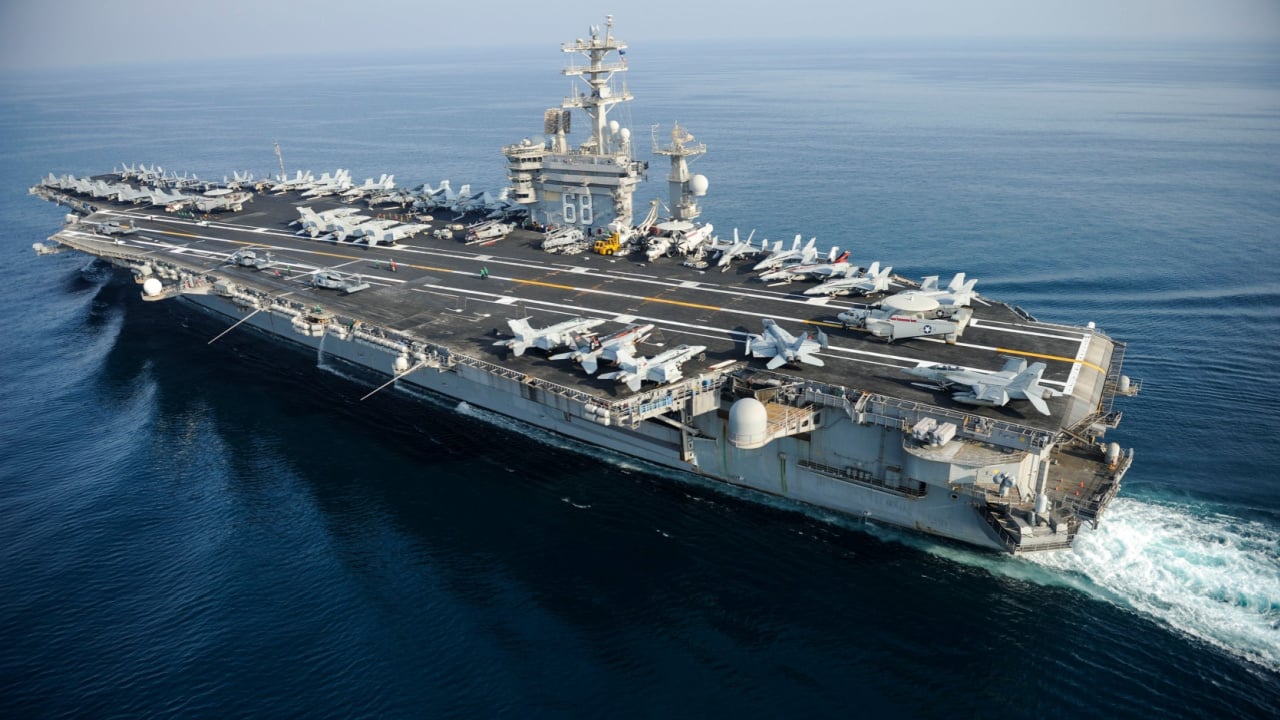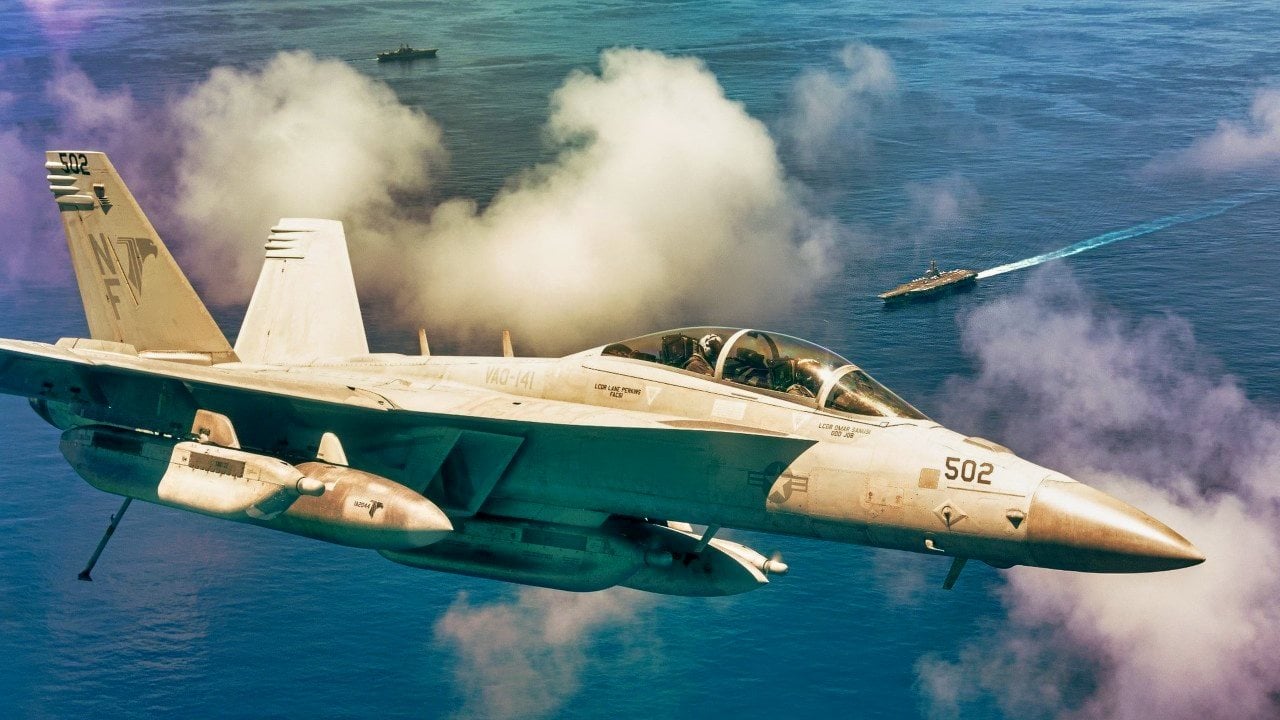Iran Keeps Sinking Fake U.S. Navy Aircraft Carriers
Iran certainly does not possess the same naval capabilities as the U.S. However, this fact has not hindered its forces from building and sinking fake U.S. Navy aircraft carriers.
Why Iran Keeps Practing How to Sink a U.S. Navy Aircraft Carrier: Iran certainly does not possess the same naval capabilities as the U.S.
However, this fact has not hindered its forces from building and sinking fake aircraft carriers.
As tensions between Tehran and Washington have ramped up in recent years, the Islamic Revolutionary Guard Corp (IRGC) has escalated its hostile rhetoric and actions via proxy warfare throughout the region.
Most recently, Iran’s Yemen-based affiliate group the Houthi rebels have engaged in dozens of maritime attacks targeting Western vessels and warships in the Red Sea and Persian Gulf. A cruise missile launched by the Iranian-backed group came within one mile of a U.S. destroyer this week, forcing the USS Gravely to use its Close-In Weapon System (CIWS) for the first time since late 2023.
Considering this ramp-up in activity, some analysts have speculated whether or not Tehran can do more damage to U.S. warships.
According to Iran’s “mock” exercise over the years, America’s carriers could be threatened. Or at least this is what the regime would like the world to believe.
The Fake Aircraft Carrier Sinking at Prophet Mohammed 14
The most recent incident involving a faux American aircraft carrier occurred in 2020.
The Associated Press published satellite images of mock ships resembling the U.S. Navy’s fleet of Nimitz-class aircraft carriers.
The Nimitz ships typically sail through the Persian Gulf and Strait of Hormuz, a strategic chokepoint Iran has threatened to blockade over the years.
Roughly one fifth of the world’s crude oil consumption passes through the strait, making these threats significant.

The large mock-up was built on an elaborate target base, lacking any capability to land or recover aircraft. While the fake ship appeared to look similar to a Nimitz carrier from a far distance, up close, the scale of the vessel was way off, and a bulls-eye was painted on the center of the flight deck to serve as an aiming point for Iran’s Fateh-110 guided missiles.
The mock-up was constructed as part as Tehran’s “prophet Mohammed 14th” war games, according to Forbes.
Notably, the faux carrier began to capsize and sink while being towed to Bander Abbas.
As detailed in the report, “The location of the sinking will likely create a serious headache for the Iranian Navy and IRGC-N. It is just outside the harbor entrance to Bandar Abbas, near to the main approach channel.”
The Sinking at Prophet Mohammed 9
Back in 2015, Iran carried out another attack on a fake U.S. aircraft carrier. This time, Iranian commanders bragged that the faux carrier reacted to several hard hits just as a real carrier would in a real war situation. The simulation occurred during Iran’s Great Prophet Mohammaed 9 drill near the Strait of Hormuz. According to the New York Times, the Fateh-110 missile was fired toward the carrier replica.

While Iran’s demonstrations displaying the sinking of American carriers are intended to show off the country’s military might and capabilities, they are far from reality. The U.S. Navy’s Nimitz-class and upcoming Ford-class carriers are designed to withstand maritime attacks.
However, Tehran has worked hard to modernize its cruise missile and lethal unmanned aerial vehicle (UAV) arsenal in recent years.
About the Author: Maya Carlin
Maya Carlin, National Security Writer with The National Interest, is an analyst with the Center for Security Policy and a former Anna Sobol Levy Fellow at IDC Herzliya in Israel. She has by-lines in many publications, including The National Interest, Jerusalem Post, and Times of Israel. You can follow her on Twitter: @MayaCarlin.
Image Credit: Shutterstock.


